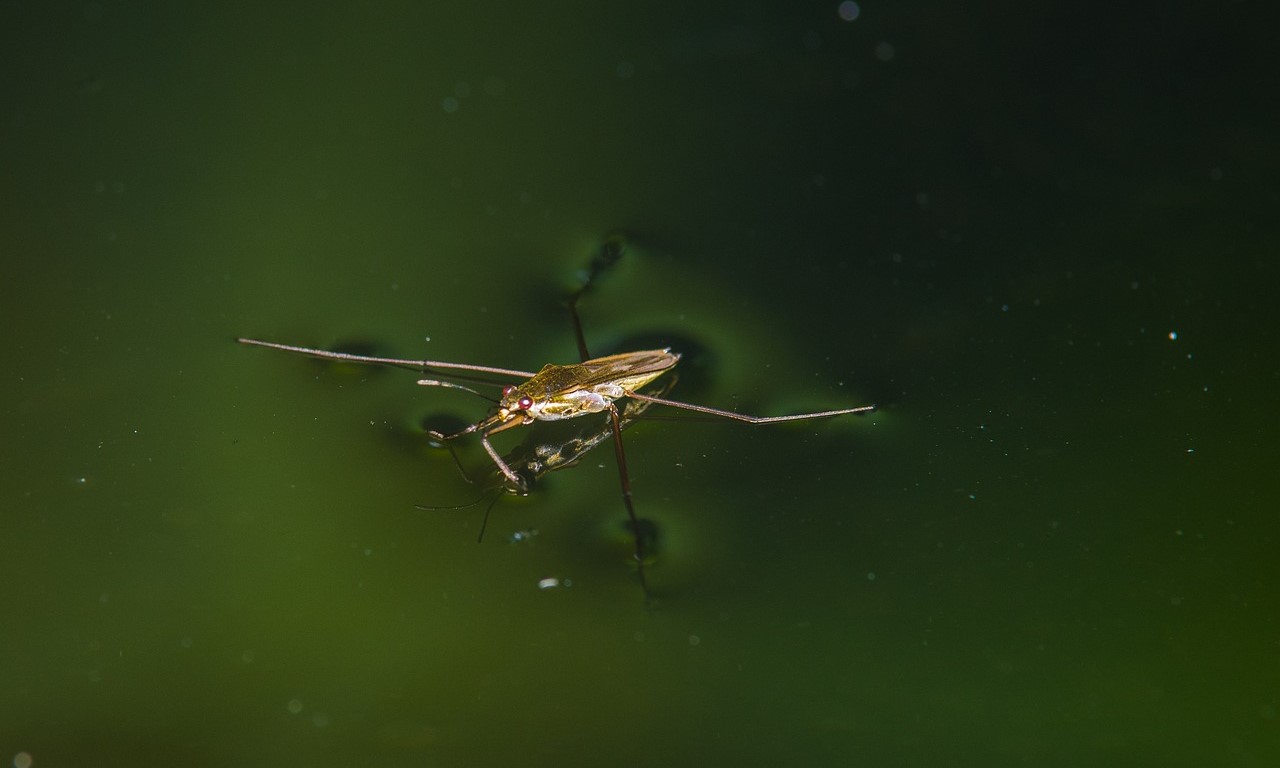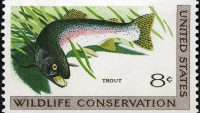Water striders, also known as pond skaters or water bugs, are fascinating insects belonging to the family Gerridae, known for their ability to glide effortlessly across the surface of calm freshwater bodies such as ponds, lakes, and slow-moving streams. These remarkable insects are equipped with specialized adaptations that allow them to move across the water’s surface without breaking the surface tension. Their elongated legs, covered in tiny hairs or hydrophobic structures, distribute their weight evenly, effectively dispersing their mass and preventing them from breaking through the water’s surface.
One of the most intriguing aspects of water striders is their unique method of locomotion, which relies on the surface tension of water. By exerting downward pressure with their legs, water striders create dimples in the water’s surface, effectively anchoring themselves in place. They then use rapid, rhythmic movements of their middle and hind legs to propel themselves forward, skating across the water’s surface with remarkable agility and speed. This method of locomotion allows water striders to hunt for prey, evade predators, and navigate their aquatic habitats with ease.
Water striders are predatory insects, feeding primarily on small aquatic invertebrates and insects that become trapped on the water’s surface. They use their specialized front legs, equipped with sensitive hairs or spines, to detect vibrations produced by struggling prey. Once detected, water striders quickly seize their prey with their sharp, piercing mouthparts and inject digestive enzymes to break down their victims’ tissues. Despite their diminutive size, water striders play important roles in aquatic ecosystems, serving as efficient predators and contributing to the regulation of insect populations in freshwater habitats.

Here are 10 interesting facts about water striders to know more about them.
- Surface Tension Masters : Water striders are able to walk on water due to the high surface tension of water. Their long, hydrophobic legs distribute their weight evenly, allowing them to effectively “skate” across the water’s surface without breaking through.
- Hydrophobic Hairs : The legs of water striders are covered in tiny, water-repellent hairs that prevent them from getting wet. These hydrophobic structures help keep the insects buoyant and allow them to maintain their balance on the water’s surface.
- Predatory Behavior : Water striders are predators, preying on insects and small invertebrates that become trapped on the water’s surface. They use their front legs, equipped with sensitive hairs or spines, to detect vibrations produced by struggling prey.
- Air Bubble Trapping : Water striders can trap air bubbles on their bodies, enhancing their buoyancy and helping them stay afloat. These air bubbles also serve as a respiratory system, allowing the insects to breathe while submerged.
- Rapid Movements : Despite their small size, water striders can move quickly across the water’s surface, reaching speeds of up to 1.5 meters (5 feet) per second. They use rapid, rhythmic movements of their middle and hind legs to propel themselves forward.
- Global Distribution : Water striders are found worldwide, inhabiting freshwater bodies such as ponds, lakes, rivers, and streams. They are particularly abundant in calm, still waters with minimal disturbance.
- Life Cycle : Water striders undergo incomplete metamorphosis, with egg, nymph, and adult stages. Nymphs resemble miniature versions of adults but lack fully developed wings. They molt several times before reaching adulthood.
- Social Behavior : Some species of water striders exhibit social behaviors, forming groups or aggregations known as rafts. These rafts can consist of hundreds of individuals, which cluster together for mating, predator avoidance, or thermoregulation.
- Adaptations for Prey Capture : Water striders have specialized mouthparts adapted for capturing and feeding on prey. Their sharp, piercing mouthparts are used to inject digestive enzymes into their prey’s body, allowing them to consume the liquefied tissues.
- Environmental Indicators : Water striders are sensitive to changes in water quality and habitat conditions, making them valuable indicators of ecosystem health. Their presence or absence can provide insights into the ecological integrity of freshwater environments.
Water striders exemplify nature’s ingenuity and adaptability, showcasing remarkable abilities to traverse the surface of water with ease and grace. Their unique hydrophobic adaptations, predatory prowess, and widespread distribution make them both fascinating subjects of study and important components of freshwater ecosystems. As masters of surface tension, water striders play vital roles in controlling insect populations, serving as indicators of water quality, and contributing to the delicate balance of aquatic ecosystems worldwide. Their ability to thrive in diverse environments and navigate the ever-changing dynamics of their habitats highlights the resilience and complexity of life on Earth.



